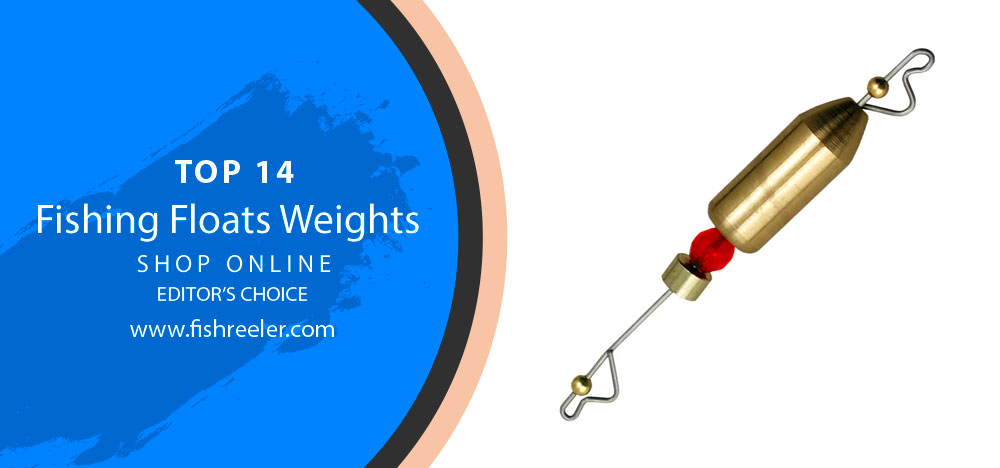
🎣 Elevate Your Fishing Experience! 🎣
Ever found yourself in a fishing conundrum, struggling with unstable floats or inconsistent depths? Enter the game-changer: Weights for fishing floats.
Why You Should Definitely Buy Fishing Float Weights:
✅ Precision Placement 🎯: Achieve the exact depth you desire, ensuring your bait is right where the fish are.
✅ Stability in Waters 🌊: Whether it’s a calm lake or a choppy sea, the right weight ensures your float stays steady.
✅ Maximized Bait Potential 🐟: With precise weight, you can make sure your bait isn’t drifting aimlessly, but enticing fish effectively.
✅ Versatility: Adapt to different fishing environments and conditions easily.🌦️🌪️
🔶 Beyond just being an accessory, the right weight for your fishing float could be the difference between a successful fishing trip and going home empty-handed. So, why settle for less? Dive deeper, cast better, and fish smarter. 🐠🏆🎣
🎣 The Right Equipment: The Key to Fishing Mastery 🎣
Fishing, often viewed as a peaceful pastime or a thrilling sport, requires more than just patience and passion. It necessitates the right equipment. From the rod’s flexibility to the reel’s responsiveness, every piece of your fishing arsenal plays a pivotal role in determining your success rate. But there’s one component, subtle yet crucial, that often doesn’t get the limelight it deserves: the weights for fishing floats.
Unlocking the Potential of Fishing Floats with Weights ⚖️
Imagine casting your line, hoping to reach a specific depth where you believe your target fish are thriving. But, instead of sinking to the desired depth, your float drifts aimlessly, or it’s easily swayed by the current. It’s here that weights come to the rescue. These tiny marvels counteract the float’s buoyancy, ensuring your bait reaches and stays where you intend.
In essence, while the float indicates a fish’s interest, the weight ensures the bait is positioned perfectly to attract that interest. It’s a partnership where one complements the other, enhancing the overall fishing experience. 🐟🌊
What You Need to Know About Weights

There’s something about fishing that just seems to captivate us, whether it’s the peacefulness of being out on the water or the thrill of reeling in that big catch. But as any experienced angler will tell you, having the right gear is crucial to a successful fishing trip. And one often overlooked piece of equipment is the fishing weight for floats.
Fishing weights for floats serve a crucial role in the fishing process, helping to keep your bait at the desired depth and ensuring that your hook stays in place. They come in a variety of shapes, sizes, and materials, and choosing the right one for your needs can make all the difference in the world.
From split shot sinkers to egg sinkers to pyramid sinkers, there is a multitude of options to choose from, each with its own unique benefits and drawbacks. Whether you’re a seasoned pro or just starting out, understanding the different types of fishing weights for floats can help you improve your technique and catch more fish. So, let’s dive in and take a closer look at what makes these little pieces of metal so important in the world of fishing.
🔶 It’s no secret that fishing floats and weights are critical pieces of gear for any fisherman. Whether you’re targeting trout in a stream or bass in a lake, using the right float and weight can make all the difference.
🔍 Unraveling the Mystery: How Do Floats Work? 🔍
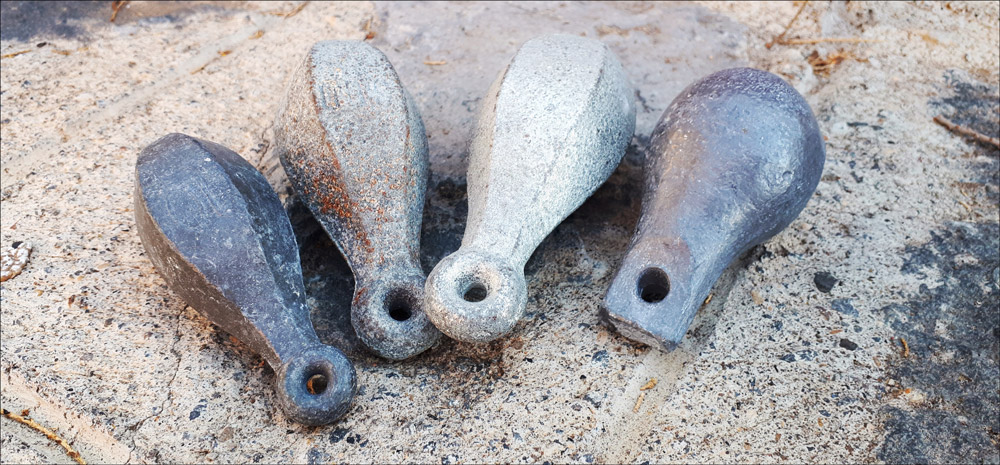
At its core, float fishing is a captivating blend of observation and strategy. But behind this seemingly straightforward method lies a world governed by physics. Let’s demystify the science!
The Core Principle: Buoyancy vs. Gravity 🪶⚓
Every object immersed in a fluid (in this case, water) experiences an upward force known as buoyancy. It’s this force that allows objects less dense than water, like our fishing floats, to stay afloat. On the flip side, gravity pulls objects downward. In float fishing, the battle between these two forces determines how your float behaves.
🟨 Buoyancy: Think of it as the water’s way of pushing back. When the upward buoyant force equals the downward gravitational force, the float remains stable at the surface.
🟨 Gravity: This is where our weights come into play. By adding weights, we increase the gravitational force, allowing the float to sink to our desired depth.
The Dance of Depth and Detection 🐠💧
The beauty of a fishing float is its dual role:
☑️ Depth Control: By adjusting the weight, you can fine-tune the depth of your bait, targeting specific layers where fish are most active.
☑️ Detection: When a fish nibbles or takes the bait, it disturbs the delicate balance between buoyancy and gravity. This causes the float to move, signaling the angler of potential fish activity.
Real-World Application: Finding the Balance ⚖️🎣
Mastering float fishing is all about understanding and manipulating this delicate equilibrium. The float should be sensitive enough to detect even the slightest nibble but stable enough to withstand minor disturbances like water currents or wind.
🔶 By harnessing the principles of gravity and buoyancy, anglers can achieve a fine balance, ensuring the bait is both enticing and noticeable to our underwater friends.
The 14 Best Fishing Weights for Different Fishing Conditions
✋ No more guesswork: our expert review of the best fishing floats and weights
Are you looking to enhance your fishing experience? Then you’ve come to the right place! Fishing floats can help you detect bites more easily and accurately, increasing your chances of catching fish. But to ensure that your float stays upright and visible in the water, you need the right fishing weight for your rod.
With so many options available, it can be overwhelming to choose the best one for your needs. But fear not! Our comprehensive guide will take you through everything you need to know about fishing weights for floats. From choosing the right weight to adjusting it for optimal performance, we’ve got you covered. So, let’s dive in and discover the perfect fishing float weight for your next fishing adventure!
1# Bass Pro Shops Rubber Grip Lead Sinkers: Our Top Picks for the Best Fishing Floats
Bass Pro Shops Rubber Grip Lead Sinkers are a must-have for any angler looking to add some weight to their line. These sinkers are made of high-quality lead and feature a rubber grip that makes them easy to install and remove from your fishing line. The rubber grip also helps to prevent damage to your line, ensuring that it remains strong and intact.
These sinkers come in a variety of sizes to accommodate different fishing needs. They are available in sizes ranging from 1/16 oz to 1 oz, making them suitable for a variety of fishing applications, from freshwater to saltwater fishing.
One of the most significant advantages of these sinkers is their streamlined design, which makes them easy to cast and retrieve. The streamlined design also reduces the chances of the sinker getting tangled with the line or weeds, ensuring that your fishing experience is as smooth as possible.
Bass Pro Shops Rubber Grip Lead Sinkers are the perfect way to keep your fishing line in place. These football-shaped sinkers have a rubber core and two tabs on each end, making it easy to twist the line around the sinker and keep it in place. When you’re ready to release the line, simply twist the tabs in reverse and the line will be released. With no need to worry about nicking or damaging your fishing line, Bass Pro Shops Rubber Grip Lead Sinkers are a must-have for any serious angler.
2# Bass Pro Shops XPS Hook Weights
Looking for a way to customize the weight of your favourite fishing hooks? Check out Bass Pro Shops XPS Hook Weights – designed to be crimped onto the hook shaft, these weights allow you to quickly adjust and fine-tune the weight of your hooks. A weighted hook provides more balance and produces a more natural swimming action – which is why weighted hooks have become the preferred choice for many swimbait anglers. So if you’re looking to add a little extra weight (and effectiveness) to your hooks, pick up some Bass Pro Shops XPS Hook Weights today.
3# Top Brass Carolina Ready Rigs
The Top Brass Carolina Ready Rigs are the perfect way to get started using a Carolina rig. This easy-to-use fishing rig uses brass weights, glass beads, and Pro-Tickers to create a loud, fish-enticing sound that is sure to attract attention. With this rig, you’ll be able to start fishing right away – no need to tie on any extra weights or add anything else. Just grab your favourite lure and you’re ready to go!
4# Bass Pro Shops Trolling Weights
You certainly need Bass Pro Shops Trolling Weights. These weights are specifically designed to get your bait rigs down to the deepest feeding zones, so you can snag the big one. And with the bead chain for increased stability, you can rest assured your bait will stay right where you want it. So don’t miss out on your chance to up your game. Pick up a set of Bass Pro Shops Trolling Weights today.
5# Bass Pro Shops Round Split Shot Weights
Bass Pro Shops Round Split Shot Weights are perfect for a clean and uniform way to weigh your line! These weights are 100% lead, so you can be confident in their quality and performance. Whether you’re fishing for bass, trout, or any other fish, these weights will help you get the results you’re after. And because they’re split shot weights, they’re easy to use and adjust. So don’t wait any longer, get your Bass Pro Shops Round Split Shot Weights today and see the results for yourself!
6# Water Gremlin Removable Split Shot
Are you tired of dealing with those pesky little split shot weights that are a pain to put on and take off? Well, your search is over! The Water Gremlin Removable Split Shot is exactly what you need. These little weights can be pinched onto your line with just finger pressure and removed just as easily by squeezing the pre-formed “ears” behind the slot. They’re made of extra-soft lead for a smooth, snag-free experience and feature a hinged design that won’t damage your line. Plus, they come in a handy little reusable storage pouch so you can take them with you wherever you go. So make your life a little easier and pick up some Water Gremlin Removable Split Shot weights today!
7# Bass Pro Shops Carolina Shortcut Rig
The Carolina Shortcut Rig is great for fishing in a variety of conditions. The weight ensures your bait stays in the strike zone, while the bead adds noise and flash to attract fish. And the ticker keeps your bait right where you want it, making sure those fish can’t resist taking a bite!
8# Bass Pro Shops Egg Sinkers
If you’re looking for a way to get your bait deep where the big fish are hiding, our Bass Pro Shops Egg Sinkers are just what you need. These oval, egg-shaped lead sinkers will glide through weeds and rocks snag-free, making them ideal for catfish and Carolina-rigging. Plus, the slip-style weights allow fish to feel the bait, not the weight, giving you a better chance of landing that lunker!
9# Bass Pro Shops XPS Clam Shot Weights
These clam-shaped weights are easy to adjust and remove, making them a practical choice for any angler. Their shape also makes them less likely to snag on underwater obstacles, so you can focus on landing that big one! Plus, they won’t inhibit presentation or casting, making them a great option for both novice and experienced anglers alike. So next time you’re headed out on the water, be sure to pick up a pack of XPS Clam Shot Weights – your fish will thank you!
10# Offshore Angler Trolling Sinkers
Our Offshore Angler Trolling Sinker is just what you need. This sleek and effective design eliminates water drag, while the integral crane swivels help reduce line twists. Simply connect the swivelled ends between your snap swivel and leader, and you’re good to go! Whether you’re fishing with traditional lines or wire lines, this sinker is sure to help you get the most out of your next fishing trip.
11# ECOFT Lead Free Fishing Sinkers
The ECOFT Lead Free Fishing Sinkers and Weights Coated Egg Sinkers are made with multiple degradable metals, without any heavy metals, to keep them dense and durable. They’ve passed the California Proposition 65 certification at TUV, so you can be sure they’re friendly to the water environment. The smooth centre hole minimizes damage to the fishing line and makes it easy to change lures and rigs. And because they’re made with degradable materials, you can feel good about using them knowing that they won’t harm the environment.
12# Swpeet Fishing Weights Sinker Rolling Swivel with Interlock Snap Connector
Looking for an affordable and comprehensive fishing weights kit? Look no further than the Swpeet 86 Pieces 9 Sizes 5g-35g Fishing Weights Sinker set! This great value kit comes with 36 sinkers and 50 fishing beads, providing everything you need for a variety of different fishing applications. The sinkers are easy to rig and change, and the included mini box makes it easy to keep everything organized and travel-friendly. Whether you’re a beginner or a seasoned pro, this fishing weights set is a must-have for your tackle box.
13# Piedrunner Fishing Weights
Check out the Piedrunner Fishing Heavy Weights! Made of high-grade metal material, this pack includes 5 different weights (2.0g-20pcs, 2.5g-20pcs, 3.0g-20pcs, 3.5g-20pcs, and 4.0g-20pcs) with scale marks for easy trimming and cutting. The soft core is made of grade plastic for superior elasticity and durability, while the clear plastic box helps you keep everything organized and easily portable. Get your Piedrunner Fishing Heavy Weights today and enjoy a hassle-free fishing experience!
14# iLure Cannonball Weights Fishing Sinkers Accessories Kit
These high-quality weights are perfect for use with jigs and feature a smooth swivel action that prevents tangling. They’re also great for trolling, texas rigs, drop shot rigs, and drift rigs. Plus, the included catfish rig and deepwater fishing accessories make this kit perfect for any type of fishing. Order yours today and be ready for your next fishing adventure!
Why Weights are Essential in Float Fishing

Every angler knows the thrill of seeing a float dance upon the water’s surface, signaling a fish’s interest. But what ensures this dance is graceful, precise, and effective? Enter the unsung hero of the fishing world: weights.
Depth Precision: Hitting the Sweet Spot 🎯
Different fish species prefer different depths. Some lurk near the surface, while others thrive in the deep. Ensuring your bait is at the optimal level is crucial for successful fishing. Weights help in:
- Targeted Fishing: If you’re after a specific species, you’ll want your bait to be right in their comfort zone.
- Depth Adaptability: Depending on the time of day or season, fish might change their preferred depths. Weights allow anglers to adjust accordingly, ensuring they’re always in the game.
Stability: Standing Firm Amidst the Waves 🌊
Water isn’t always calm. Whether it’s the wind creating surface ripples or underwater currents trying to sweep your bait away, fishing conditions can be unpredictable. Weights ensure:
- Consistent Positioning: Despite external disturbances, your float remains where you want it.
- Reduced Drift: Weights counteract unwanted sideways drift due to currents, keeping your bait in the targeted area.
Bait Presentation: The Art of Allure 🐟✨
How your bait moves and presents itself underwater can significantly influence a fish’s decision to bite. Weights play a pivotal role in:
- Natural Movement: By anchoring the bait to a certain depth, weights ensure it moves naturally with the water’s ebb and flow, making it more enticing to fish.
- Visibility: Sinking baits to the right depth ensures they’re visible to more fish, especially in murky waters or during overcast conditions.
🔶 In conclusion, while floats signal a fish’s interest, weights ensure that interest is piqued in the first place. They provide the necessary balance, stability, and depth control, ensuring that every cast counts. For any angler looking to master the art of float fishing, understanding the role of weights is paramount.
Types of Weights for Fishing Floats: Navigating Your Options
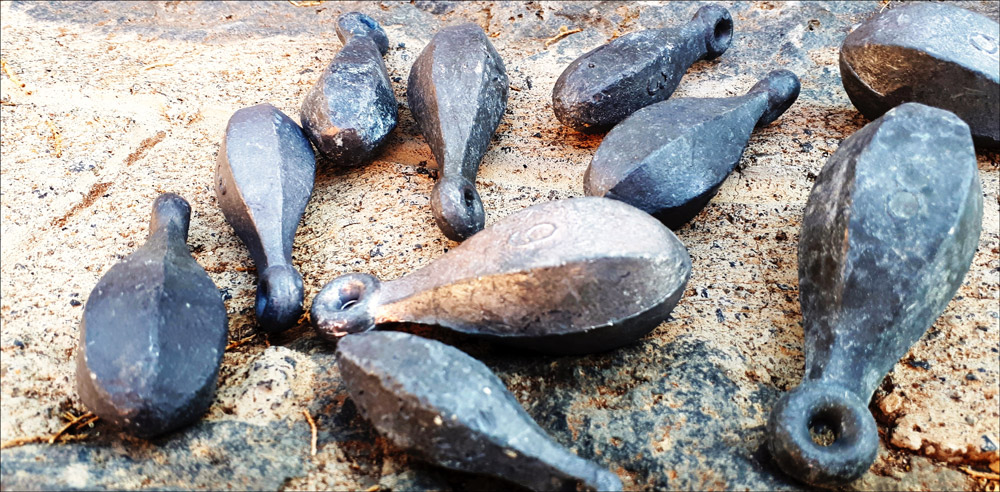
Navigating the world of fishing weights can feel like venturing into uncharted waters. But fear not! With a clear understanding of the different types available and their specific advantages, you’ll be well-equipped to make the right choice. Let’s dive into these options. 🎣🔍
Split Shots: The Versatile Pebbles ⚫
Description: Small, round, and made primarily of lead or steel, split shots are easy to attach and adjust on the fishing line.
Bullet Weights: The Aerodynamic Warriors 🚀
Description: Shaped like bullets, these weights are primarily used for bottom fishing and are excellent for casting long distances.
Benefits:
- Smooth Casting: Their streamlined design allows for longer and accurate casts.
- Weedless: Slides through underwater vegetation without getting snagged.
Drawbacks:
- Less Adjustability: Once placed, they’re harder to reposition than split shots.
- Weight Overload: If too heavy, they might sink the bait too quickly, missing the target depth.
Pyramidal and Bank Sinkers: The Current Tamers ⚓
Description: Pyramidal sinkers have a pyramid shape, while bank sinkers are rounded. Both are designed for heavy-duty fishing in strong currents.
When to Use:
- Strong Currents: Their shape and weight anchor the bait effectively.
- Deep Waters: Ideal for reaching the bottom quickly.
How to Use:
- Anchor Point: Attach near the bait to ensure it stays in the desired zone.
- Combo Approach: Pair with lighter weights for balance and adjustability.
Slip Weights: The Depth Magicians 🌊↕️
Description: These are hollow weights that allow the line to pass through them, making depth adjustments swift and smooth.
Advantages:
- Rapid Depth Changes: Easily slide up or down the line for quick adaptations.
- Fish Friendly: Fish don’t feel the weight immediately upon biting, giving anglers more time to set the hook.
Drawbacks:
- Tangle Risk: If not used properly, can cause line entanglements.
- Requires Skill: Best for those with a bit of experience to utilize them effectively.
🔶 Whether you’re angling in a placid lake or a roaring river, understanding the types of weights available can transform your fishing game. By matching the right weight with the environment, you not only increase your chances of a catch but also savor the joy of mastering the craft.
How Weighted Floats Can Help You Catch More Fish

Fishing weights for floats, also known as sinkers, are small weights that are used to add weight to your fishing line to help your bait or lure sink to the desired depth. They are commonly used in combination with a fishing float, also known as a bobber, to help anglers detect when a fish is biting.
Fishing weights for floats come in a range of sizes and shapes, with the most common being cylindrical or round in shape. They can be made from a variety of materials, including lead, tungsten, and brass.
The weight of the sinker you need depends on a variety of factors, including the depth of the water, the strength of the current, and the weight of your bait or lure. Generally, the weight of the sinker should be heavy enough to keep your bait or lure at the desired depth but not so heavy that it drags on the bottom or makes it difficult to cast.
To use a fishing weight for a float, you first need to attach it to your fishing line. You can do this by using a loop knot or a sliding weight rig, depending on the type of weight you are using. Once you have attached the weight, you can then attach your fishing float to the line.
🔶 The float helps to keep your bait or lure at a specific depth, allowing you to adjust the weight to match the current conditions. When a fish bites, the float will bob or dip, indicating that it’s time to reel in your catch.
The Benefits of Using Weighted Floats in Your Fishing
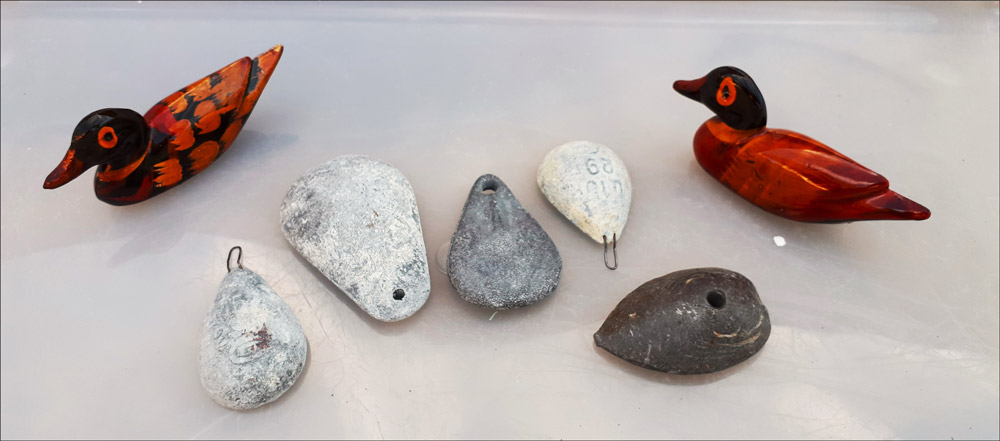
Using weighted floats in your fishing can provide numerous benefits that can help you catch more fish and improve your overall fishing experience.
⭐ Here are some of the benefits of using weighted floats:
- Improved Casting Distance: Weighted floats are typically heavier than traditional floats, which can improve your casting distance. This allows you to reach deeper water where fish may be hiding and increase your chances of catching more fish.
- Better Control of Bait or Lure: The added weight of the float helps you to maintain better control of your bait or lure. This can be especially helpful in windy conditions or when fishing in strong currents.
- Detecting Bites: Weighted floats can also help you detect bites more accurately. When a fish bites, the float will dip or move, alerting you to reel in your catch.
- Targeting Specific Depths: Weighted floats can be adjusted to target specific depths, allowing you to target fish at different levels in the water column. This can be especially useful when fishing for species that prefer specific depths, such as trout.
- Versatility: Weighted floats can be used in a variety of fishing situations, from freshwater to saltwater, and for different species of fish. They can be used in conjunction with live bait or lures, making them a versatile addition to your tackle box.
Choosing the Right Weight: Factors to Consider

While understanding the types of weights is crucial, knowing how to select the right one for specific conditions is the key to angling success. Several factors come into play, ensuring that your bait is not only visible but also enticing to your aquatic targets. 🎯🐟
Type of Water Body: Calm Lakes vs. Raging Rivers 🏞️🌊
Still Waters (e.g., Lakes, Ponds):
- Lighter Weights: With no current to combat, lighter weights like split shots often suffice.
- Subtlety is Key: Minimize disturbances when the bait hits the water, ensuring it doesn’t spook the fish.
Flowing Waters (e.g., Rivers, Streams):
- Heavier Weights: To counteract the current, consider pyramidal or bank sinkers.
- Stability: The weight should anchor the bait in place, resisting the pull of the water.
Targeted Fish Species: Depth and Deception 🐠🦈
Surface-Dwelling Fish (e.g., Bass):
- Minimal Weighting: Keep the bait closer to the surface.
- Visual Presentation: Ensure the bait is visible and lively.
Bottom-Dwellers (e.g., Catfish):
- Heavier Weights: Bullet weights or bank sinkers can get the bait down quickly.
- Scented Bait: These species rely more on scent; ensure the bait remains stationary at the bottom.
Type of Bait Used: Harmony in Movement 🦐🍂
Live Bait (e.g., Worms, Minnows):
- Adaptable Weights: Slip weights allow live bait to move naturally while adjusting depth.
- Avoid Overloading: Too much weight can restrict the bait’s movement, making it less appealing.
Artificial Lures:
- Match the Lure: Some lures are designed to sink, rise, or remain neutral. Choose weights that complement the lure’s design.
- Play with Presentation: Experiment with different weights to vary the lure’s action and depth.
Current and Wind Conditions: Adapting to Nature’s Whims 🌪️⚓
Strong Currents:
- Stable Sinkers: Pyramidal and bank sinkers offer stability.
- Positioning: Place the weight closer to the bait to keep it in the target zone.
Windy Conditions:
- Increased Weight: Counteract the wind’s surface push.
- Anchor Points: Multiple smaller weights distributed along the line can prevent excessive drift.
🔶 Choosing the right weight involves more than just gauging its heaviness. It’s about understanding the environment, the fish, the bait, and how they all interact. When these elements harmonize, the symphony of a successful catch is the reward. 🎣🎶
How to Use Weights for Optimal Performance
⭐ Using weights correctly can make a significant difference in your fishing performance. Here are some tips to help you use weights for optimal performance:
- Choose the Right Weight: The first step in using weights for optimal performance is to choose the right weight for your fishing conditions. Factors like water depth, current speed, and wind conditions can affect the weight you need. Generally, the weight should be heavy enough to keep your bait or lure at the desired depth but not so heavy that it drags on the bottom or makes it difficult to cast.
- Position the Weight: Once you have selected the right weight, the next step is to position it correctly on your fishing line. The weight should be placed above your hook or lure, allowing it to sink to the desired depth. You can also adjust the position of the weight to change the sink rate and depth of your bait or lure.
- Adjust the Weight: If you are not getting any bites, adjusting the weight can be an effective way to improve your chances of catching fish. You can add or remove weight to change the depth at which your bait or lure is fishing. Additionally, you can adjust the weight to match the current conditions, such as adding more weight to combat a strong current.
- Experiment with Different Weights: Don’t be afraid to experiment with different weights to find the optimal weight for your fishing conditions. Sometimes, a small change in weight can make all the difference in getting bites.
Tips and Recommendations for Beginners and Pros
⭐ Whether you’re a beginner or a seasoned pro, here are some tips and recommendations to improve your fishing experience:
- Use the Right Equipment: Having the right fishing equipment is essential for a successful fishing trip. Make sure you have the appropriate fishing rod, reel, line, and tackle for the type of fishing you plan to do.
- Know Your Fishing Spot: Understanding the location you’ll be fishing in can greatly increase your chances of catching fish. Research the area beforehand and learn about the types of fish that live there, their habits, and the best time of day to fish.
- Practice Your Casting: Practicing your casting technique can greatly improve your accuracy and distance. Spend some time practicing on land before heading out on the water.
- Use the Right Bait: Different types of fish prefer different types of bait. Research the species you’ll be targeting and use the appropriate bait or lure to increase your chances of catching fish.
- Pay Attention to the Weather: Weather conditions can greatly affect fishing success. Pay attention to the weather forecast and adjust your fishing strategy accordingly.
- Be Patient: Fishing requires patience and persistence. Don’t give up if you don’t catch anything right away. Enjoy the experience and keep trying.
- Learn from Others: Don’t be afraid to ask other fishermen for advice or tips. Joining a local fishing club or taking a fishing class can also provide valuable information and guidance.
Expert Tips for Using Float Weights
To master the art of float fishing, it’s not just about having the right equipment but also knowing how to utilize it to its full potential. Whether you’re a seasoned angler or just dipping your toes into the waters of fishing, these expert tips on using float weights will amplify your success. 🌟🎣
Strategic Placement: The Balance Act ⚖️
- Distance from Float: Positioning the weight too close or too far from the float can affect its sensitivity. Experiment to find the sweet spot for your target species.
- Staggered Weights: Instead of one single heavy weight, consider using multiple smaller ones. Distributing them along the line can achieve a more balanced and natural movement.
- Avoid Overloading: Using excessive weight can sink the float. It’s all about balance – the float should remain upright and just above the water surface.
Adjusting Weights: Responding to Nature’s Clues 🧐
- Observe Fish Behavior: If fish are striking but not hooking, they might be biting from below. Adjust your weight to lower or raise the bait accordingly.
- Water Depth: If you’re unsure of the water depth, start with less weight and gradually add more until you reach the desired depth.
- Changing Conditions: If the wind picks up or the current strengthens, be ready to adjust your weights to maintain optimal bait positioning.
Maintenance and Care: A Weight’s Best Friend 🧽
- Rinse After Use: Especially if fishing in saltwater, always rinse your weights to remove salt and prevent corrosion.
- Regular Checks: Look for signs of wear and tear. A corroded weight can weaken your line or affect the bait’s presentation.
- Non-lead Options: Consider using steel or tungsten weights. They’re environmentally friendly and avoid potential lead poisoning issues.
Safe Storage: An Organized Angler’s Dream 📦
- Tackle Boxes: Invest in a good tackle box with compartments. This keeps different types and sizes of weights separated and easy to find.
- Labeling: If you have a variety of weights, label compartments for quick identification.
- Moisture-Free: Always ensure your weights are dry before storing. This prevents corrosion and prolongs their life.
- Avoid Overcrowding: Give your weights space. Packing them too tightly can lead to chipping or damage. 🏆🐟
❓ FAQ: Exploring Different Fishing Weights for Float Fishing ❓
Conclusion: Maximizing Your Fishing Potential with Weighted Floats
Float fishing, an art as ancient as it is engaging, hinges on the delicate balance between patience, skill, and having the right gear. Weights, often overlooked, are the unsung heroes of this balance. 🌊🎣
Just as a musician wouldn’t use an out-of-tune instrument, a true angler understands the value of every piece of their setup. Weights play a pivotal role in ensuring that the bait is presented at the optimal depth, appeals to the target fish, and remains stable even when Mother Nature decides to be whimsical. 🌬️🐠
To embark on a journey of successful float fishing:
- Recognize the significance of weights in every cast.
- Educate yourself on the diverse range of weights available and their specific applications.
- Experiment and adjust based on your observations and the conditions at hand.
- The investment of time in mastering the subtle art of weight adjustment can be the difference between an empty hook and the satisfaction of a catch. And, as with all skills, practice paired with knowledge will lead to mastery. 🌟
🔶 In the words of an old fishing adage, “The best fishermen always seem to have the most finely tuned instruments.” Make sure your weights are part of that fine-tuning, and may every fishing trip be filled with stories of the one that didn’t get away! 🐟🏆
Further Reading and Resources
While this guide offers a comprehensive insight into the world of fishing weights, the ocean of knowledge on this topic is vast and deep. For those who are eager to delve even further and truly master the craft, here are some essential resources to elevate your angling prowess. 📚🌐
📖 Books on Angling Techniques and Equipment:
“The Complete Angler” by Izaak Walton: A timeless classic that covers the philosophy and joy of fishing.
“The Total Fishing Manual” by Joe Cermele: A modern guide filled with 317 essential fishing skills.
“Advanced Float Fishing: A Comprehensive Guide” by Matt Hayes: Delve into advanced techniques and gear specifics.
🌐 Websites Packed with Insights:
AnglingDirect.com: A treasure trove of articles, gear reviews, and expert tips.
Fisherman’s Toolbox: From beginner tips to advanced techniques, this site has it all.
FishingWeightsHub: A niche site dedicated entirely to the world of fishing weights.
🎓 Courses for Enhanced Skills:
MasterClass with Kevin VanDam: Dive into lessons from one of bass fishing’s legends.
Udemy’s Float Fishing Mastery Course: Tailored for those focusing on float fishing, this course offers video lessons and interactive quizzes.
🎣 Trusted Brands & Weight Kits:
Eagle Claw: Known for their reliable fishing tackle, their weight kits cater to both beginners and professionals.
Bass Pro Shops: A renowned brand with a vast array of fishing gear, including a variety of weight kits.
Water Gremlin: Specializing in lead-free and eco-friendly options, their weight selections are both diverse and environmentally conscious. 🌊🎣

I live in Tenerife (Canary Islands) for the last 10+ years and share my daily fishing experiences on my website. Many years of personal experience as a fisherman and the vast experience of my friends allow me to write professionally on any fishing topics (from choosing a flashlight and equipment to deep-sea fishing).
All of my advice is based on practical real-world experience and will be useful to both novice anglers and professionals. Read more about the author.
Affiliate Disclosure: FishReeler.org sometimes gets paid for listings, through sponsors or affiliate programs like Amazon, Ebay, Cabelas, Bass Pro Shop, Shimano, Daiwa, Rapala, Renn, Okuma, KastKing, etс. Clicking a link helps keep FishReeler.org free, at no extra cost to you!
About the author: Each article is verified by the fishing expert Sergio Smirnoff. The articles are written by professional and amateur fishermen with 20+ years of fishing experience.
Note: The views and opinions expressed in this article are those of the authors and do not necessarily reflect the official policy or position of any agency. The articles are for informational purposes only, share your opinions in the comments and join the fishing discussions, let's share our fishing experiences together!

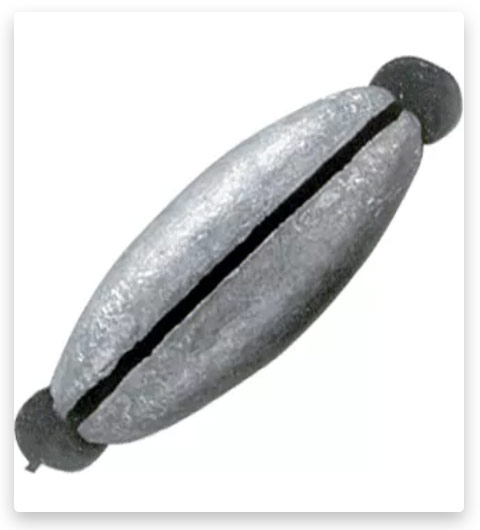
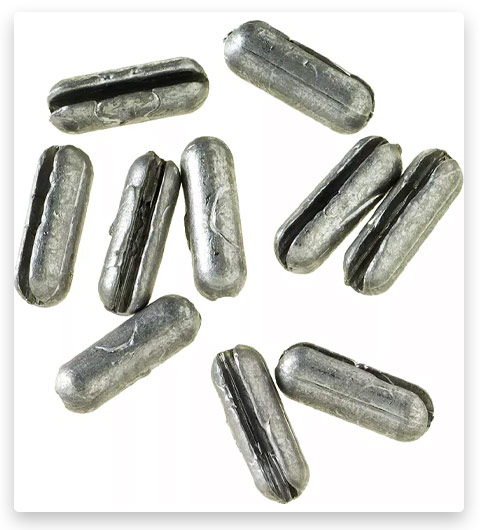
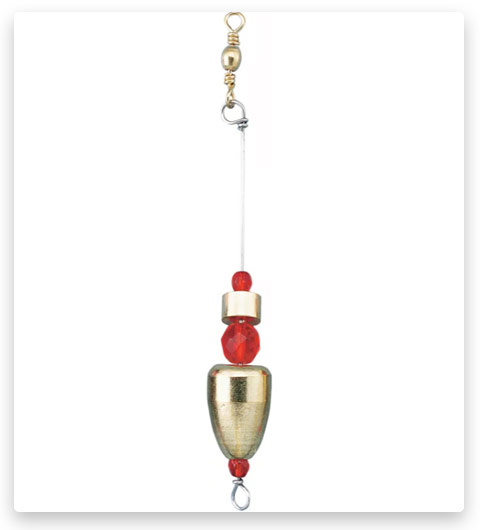
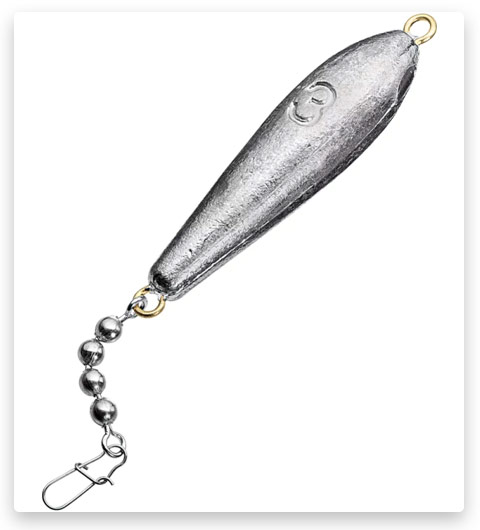

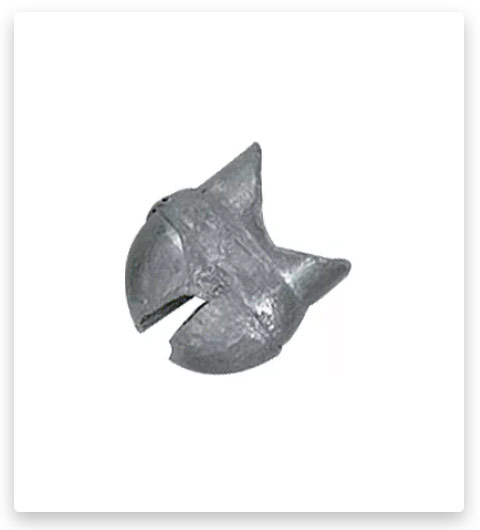
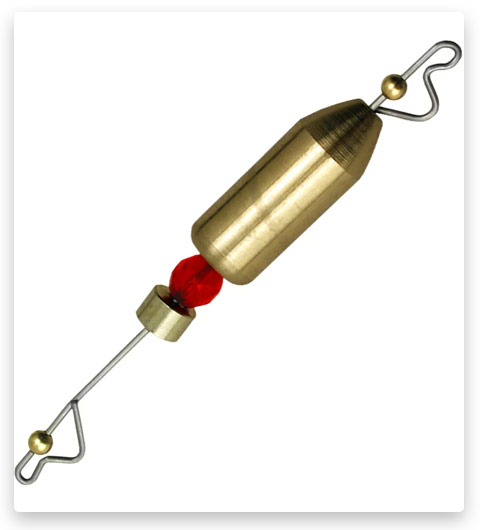
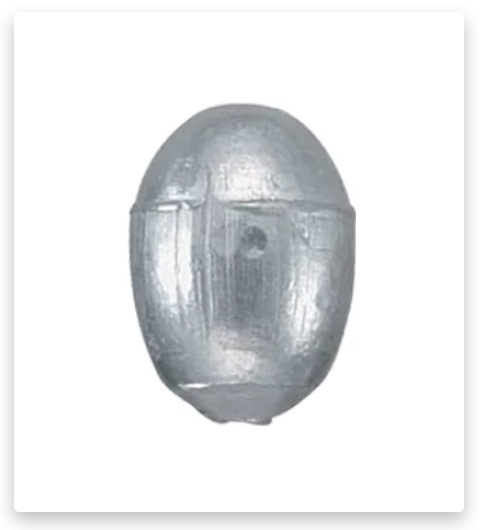

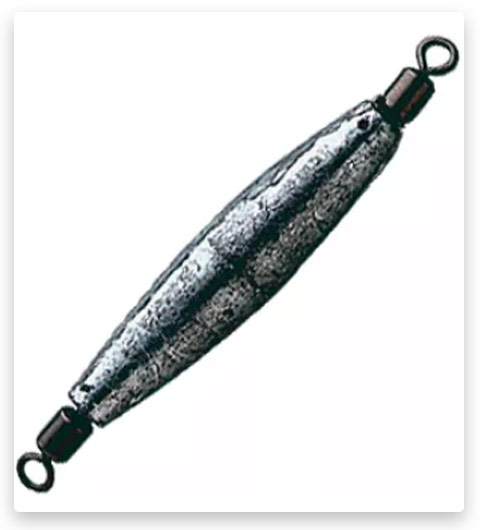



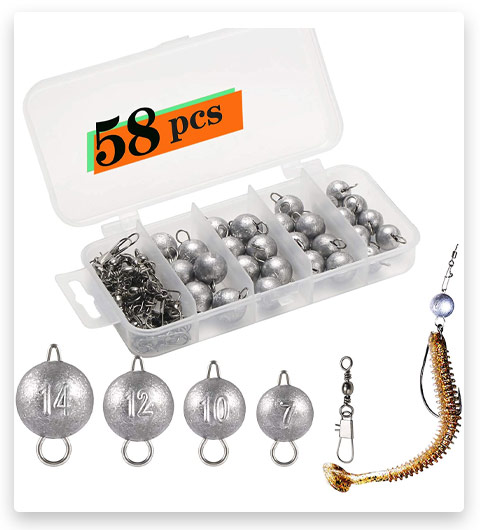
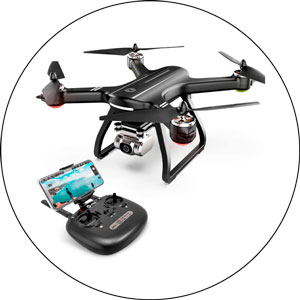
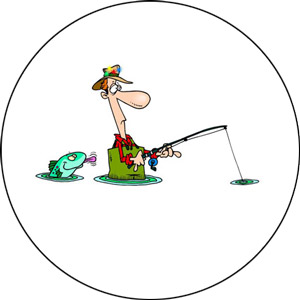

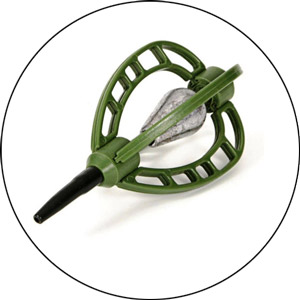
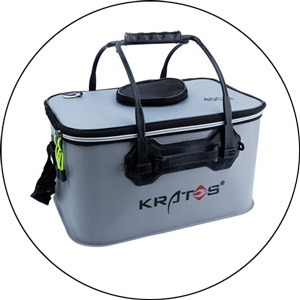
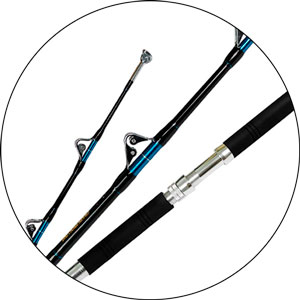
Based on my experience as a freshwater fisherman, I personally think that using bigger bobbers is unnecessary unless you’re targeting ultra-hook shy fish with tiny mouths. Bigger bobbers usually come in round ones, cigar or pole-style ones, and are designed to make the fish not feel the pull of the hook right away. However, in my opinion, it’s not really necessary.
Using slip bobbers, on the other hand, requires you to use a bobber stop or other method of trapping the bobber at a pre-selected height. As for the weight, you can just eyeball it and adjust it with a split shot. It really depends on how much pull you want when a fish bites. Personally, I like using oversized or weighted floats for extra cast distance, but that’s just my preference.
There is no rule of thumb for freshwater fishermen when it comes to selecting the right size of the bobber. It’s more of a trial-and-error process, and you’ll figure it out quickly. In my tackle box, I have a matching 1/4 oz weight and hook with a 3/4 inch round float, but that’s just what works for me.
Overall, I think selecting the right bobber size is not a complicated task. You can easily adjust anything super quickly by just cutting and tying a couple of knots, which usually takes me around 2 minutes to do.
I believe there are tables available that can help you select the right weight for your float. Some floats are even “stamped” with the weight on the side, which can be helpful. However, in my experience, I usually just experiment with different weights until I find the right one that makes the float sit in the water the way I want it to.
When I first started using floats, I found the fastest way to determine the right weight was by using pinch-on weights above a swivel. Once I figured out the right amount, I switched out the pinch-on weights for an inline weight. Of course, experimenting is all part of fishing, so it does take a little time to figure out what works best for you.
Overall, I think the key is to be patient and try different weights until you find the right one that works for you. There’s no one-size-fits-all approach when it comes to selecting the right weight for your float, so don’t be afraid to experiment and have some fun with it!
Choosing the right swim is crucial for successful fishing. Before setting up your gear, it’s important to take a walk around the lake, pond, canal, or river you’re fishing in. Look for signs of fish activity such as swirls on top of the water, bubbles, or fizzing. These are all good indications that fish are in that area and it would be a good place for you to fish.
When it comes to floating fishing, setting the depth is crucial. To determine the depth, you’ll need to use what is known as a plummet, which is a piece of lead with a cork attached to the bottom. Once you’re all set up, pass your hook through the eye on top of the plummet and put the hook into the cork at the bottom. Cast this out to the area of the lake where you want to fish. I suggest starting with the margins or close to the bank as float fishing isn’t ideal for very deep water.
If your float is dragged beneath the waterline when you cast the plummet out, it means you need more depth. Simply reel in and move the float up towards your rod tip. If your float lies flat on top of the water and doesn’t cock, it means you’re fishing with too much depth. Move your float towards the hook and repeat this process until your float sits with the bite indicator nicely out of the waterline.
If you need further assistance, I can also draw up a simple image of my float fishing rig to help you better visualize the setup. Feel free to direct message me if you have any questions or need additional help.👍
As a British angler, I have noticed that American fishing typically involves very basic bait fishing tactics and rigs that may seem outdated to us. They often target different types of fish than we do, and their tackle may not be capable of executing waggler fishing techniques. Additionally, many Americans do not see the point in catching silver fish or pursuing tench and bream, and carp fishing is often considered a waste of bait.
When Americans mention float fishing, they are typically referring to using a lure-spinning rod with a golf ball-sized bobber and a heavy gauge hook, usually for panfish. This is fished mid-water with bread, worms, or small minnows for larger fish. Their panfish are similar in shape to bream but are more colorful, and a 1lb catch is considered a giant.
The closest thing they do to our float fishing is for steelhead, which is sea-run rainbow trout. They use a top and bottom float to trot for these fish, similar to a big Avon float.
While I appreciate your enthusiasm for sharing our float fishing techniques, it’s important to remember that Americans may lack access to the necessary tackle and may not be interested in catching the same types of fish as we are. However, there are still some receptive individuals who are interested in learning, so it’s worth sharing information where possible. This subreddit may not be the most appropriate platform for this topic, but I’m happy to help in any way I can.
You can make your lure lighter using in-line floats or space beans. It’s a great way to adjust the depth at which your lure is fishing and can make a big difference in getting those bites. I highly recommend investing in loaded waggler floats, which are great for both carp fishing and coarse fishing. You can find some affordable sets on Amazon, such as the one by NGT.
Don’t be discouraged by the name “carp floats,” as they can be used to catch a variety of fish. Check out the video I mentioned earlier, it should give you a good idea of what I’m talking about. And if you haven’t already, consider using float stops or space beans to help adjust your floats more easily. Good luck with your fishing adventures!
From what I understand, you may be experiencing some issues with tangles when connecting two lines together after passing it through the rod’s eyes. To avoid this, it’s best not to reel in the line that you’ve tied together as it can cause complications.
In addition, I highly recommend watching “TA Fishing guide to float fishing part 1 and part 2” on YouTube. Graeme, the presenter, provides excellent explanations and tips that cover everything you need to know to be confident with float fishing. While I’m happy to help through written communication, I believe that visual learning is more effective in this case.
Graeme is an exceptional teacher, and watching these videos will provide you with a strong foundation in float fishing. As someone who was taught by my grandfather and has become a proficient float fishing angler, I can attest to the effectiveness of his teaching style.
There are definitely a few key things to keep in mind when it comes to choosing the right lure for your fishing needs. First off, it’s important to ensure that the weight of your lure matches the specifications of your rod. This will allow you to cast it efficiently and effectively without damaging your equipment.
Another key consideration is where the fish are located. Different species behave differently and can be found in different areas of the water column, such as near the bottom, at the bottom, suspended in the middle, or near the surface. To increase your chances of success, it’s important to choose a lure that can effectively reach those areas and target the species you’re after.
For example, a top water lure is great for targeting fish near the surface, while a weighted lure like a jig head can help you reach fish that are near or at the bottom. Bobbers can also be effective when fish are suspended and can be set to different depths depending on the fish’s location. You can even add weights to your lures to help them fall faster or reach deeper depths.
When it comes down to it, the key is to choose a strategy that works for the species you’re targeting and adjust as needed based on the behavior of the fish. With a bit of practice and experimentation, you’ll soon be reeling in the catch of the day!
I completely agree with everything you said about fishing and the different factors that go into choosing the right weight and lure for your fishing needs. For live bait fishing, it’s important to match the weight to the specific situation, such as using a lighter weight for bouncing along the bottom in current and a heavier weight for sitting in place.
Lure weight also plays an important role in fishing, as heavier lures will sink faster than lighter lures. The type of lure, such as those with or without lips, and the retrieve speed also impact the depth at which the lure will run. Understanding these nuances and adjusting your technique accordingly can make all the difference in your fishing success.
Additionally, it’s important to research and understands the behavior of the species you’re targeting. This includes where they are likely located based on environmental factors, such as water temperature, and what depths they prefer. You can find information on specific fish species through resources like the DNR or other regulating bodies.
I have found that using egg sinkers or split shots is not always necessary when it comes to fishing with bait. In my experience, I mainly use free sliding bullet weights in a Texas Rig setup. Although I prefer to use tungsten weights for their durability and sensitivity, any type of bullet weight can work. This setup is versatile and can be used with various soft plastics such as craws, creature baits, or worms. I find this to be especially useful for imitating crawdads and working the bait slowly on the bottom of the lake.
Punching through grass mats can be accomplished using a bullet-weight setup as well. This technique works best when there is a lot of grass, moss, or thick weed cover in the water. The free-sliding bullet weight allows the weight and bait to move independently, making it easier to pull through weeds that grow on the bottom. It also enables a fish to bite the bait without the added tension of the weight.
When it comes to finesse fishing, I like to use the drop shot technique with finesse or tear-drop weight. This method is perfect for targeting suspended bass away from the structure, and I typically use it during late summer or early fall. While there are specially designed plastic worms for drop-shotting, I’ve had success using a variety of plastic worms on the drop-shot. The key is to target the proper depth.
If you’re interested in exploring other weighted baits, such as swim jigs, football jigs, wobble heads, or ned rigs, I’m more than happy to share any information I have to help you catch more fish.
I totally agree that bass can be caught all year round. As an avid angler from Iowa, I’ve had success in catching bass even during winter months, when the water is colder and the fish tend to be less active. In general, the activity and feeding habits of bass are closely related to the temperature of the water. Warmer water temperatures lead to more active fish and vice versa.
The best times to catch bass are during the pre-spawn and spawn periods and whenever the water temperature is around 70 degrees Fahrenheit. However, there’s always a chance to catch fish outside of these periods, even if it requires a bit more work. It’s important to remember that fish are always there, and they’re always hungry. As anglers, it’s our job to give them what they want and make them bite.
During the spawn, bass becomes more aggressive and easier to catch. This is because they’re bulking up and mating, which makes them hungry for almost anything they can eat. It’s an exciting time for fishing, as you’ll often find the biggest fish of the year during this period.
Personally, I target bass from mid-April through November, as those are the prime months for bass fishing in Iowa. I usually prefer to fish in the early mornings or evenings, as it’s more comfortable and productive compared to the heat of the day or the freezing temperatures of winter. Nevertheless, I’ll take any opportunity to fish and be on the water, as any fishing experience is better than none!